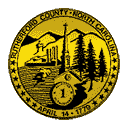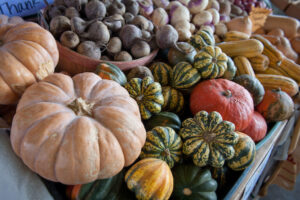Sweet and Delicious Fall Foods
go.ncsu.edu/readext?891020
en Español / em Português
El inglés es el idioma de control de esta página. En la medida en que haya algún conflicto entre la traducción al inglés y la traducción, el inglés prevalece.
Al hacer clic en el enlace de traducción se activa un servicio de traducción gratuito para convertir la página al español. Al igual que con cualquier traducción por Internet, la conversión no es sensible al contexto y puede que no traduzca el texto en su significado original. NC State Extension no garantiza la exactitud del texto traducido. Por favor, tenga en cuenta que algunas aplicaciones y/o servicios pueden no funcionar como se espera cuando se traducen.
Português
Inglês é o idioma de controle desta página. Na medida que haja algum conflito entre o texto original em Inglês e a tradução, o Inglês prevalece.
Ao clicar no link de tradução, um serviço gratuito de tradução será ativado para converter a página para o Português. Como em qualquer tradução pela internet, a conversão não é sensivel ao contexto e pode não ocorrer a tradução para o significado orginal. O serviço de Extensão da Carolina do Norte (NC State Extension) não garante a exatidão do texto traduzido. Por favor, observe que algumas funções ou serviços podem não funcionar como esperado após a tradução.
English
English is the controlling language of this page. To the extent there is any conflict between the English text and the translation, English controls.
Clicking on the translation link activates a free translation service to convert the page to Spanish. As with any Internet translation, the conversion is not context-sensitive and may not translate the text to its original meaning. NC State Extension does not guarantee the accuracy of the translated text. Please note that some applications and/or services may not function as expected when translated.
Collapse ▲I often hear people say autumn is their favorite season of the year. The changing colors and cooler weather are welcome after a long, hot summer. We do not usually associate autumn with bountiful backyard gardens, however, the fall season offers an abundance of sweet and healthy foods. What are your favorite fall foods – pecans, butternut squash, apricots, sweet potatoes?
Pumpkin is a fall favorite and is high in vitamin A, potassium, and dietary fiber. Half a cup of pumpkin provides only 40 calories and is well known for its versatility in recipes from pies and quick breads to entrees and side dishes. Whether you choose canned pumpkin or fresh pumpkin, you get a boost of nutrition in every bite.
When selecting pumpkins for cooking, choose relatively small ones that feel hard, have no soft spots or cracks, and seem heavy in relation to their size. Store them in a cool, dry place for up to two months. Once cut, pumpkin should be refrigerated and used within four days.
Raw pumpkin can be cut into bite-sized pieces and added to stir-fries or roasted in the oven. To make pumpkin puree, cut the pumpkin in half and scoop out the seeds and strings. Put the halves on a baking pan with the cut sides facing down. Bake at 350 degrees for about 45 minutes or until the pulp is tender. Allow the cooked pumpkin to stand for five minutes, then scoop the flesh out of the rind and into a food processor or blender. Pureed pumpkin can be used immediately or frozen for later use.
Pureed pumpkin can be turned into a savory soup by adding broth and seasonings such as sage, curry, nutmeg or cinnamon. Try swirling pureed pumpkin with a small amount of maple syrup into a steaming bowl of hot cereal. Pureed pumpkin can also be substituted for winter squash or sweet potatoes in most recipes.
Save the seeds when you clean out your pumpkin. Rinse the seeds well. Mix three tablespoons of olive or canola oil, one-fourth teaspoon garlic salt, and a dash of Worcestershire sauce with the seeds. Spread out on a cookie sheet and bake at 350 degrees until the seeds are brown and crispy.
As mentioned, pumpkin and other orange-colored fruits and vegetables are rich in Vitamin A, which is one of many antioxidants that aid in healthy eyesight and repair of damaged cells. Oxidation is caused by oxygen molecules called “free radicals” that cause normal wear and tear, a.k.a. aging, of the body’s cells. Free radicals can also help set the stage for cancer development. Antioxidants like vitamins A, C, and E help repair much of the harm free radicals cause.
Vitamin A becomes “beta-carotene” after you consume it. Think of carrots when you think of carotene, since the orange color signals its presence. Beta-carotene is absorbed from foods best when it is eaten with a small amount of a healthy fat, such as olive oil. Adding carrots and different types of winter squash to a vegetable stir-fry can boost essential nutrients.
Another fall favorite is sweet potatoes. Sweet potatoes are loaded with nutrients and provide color, flavor, and versatility to so many delicious recipes. They are also a great alternative to white potatoes, as are rutabagas, a less common fall vegetable. Rutabaga is a root vegetable with a mellow, golden flesh. When cooked, it becomes both sweet and savory like a rich golden potato. It can be prepared in all the same ways as white potatoes, which make them an excellent substitute with a nutritional punch. Rutabaga is rich in Vitamin C, potassium, and fiber and less starchy than a white potato.
In addition to the fruits and vegetables already mentioned, autumn brings us a variety of other healthy foods such as apples, pears, cabbage, beets, turnips, and collards. To learn more about winter squash and other fall foods, join us for a cooking demonstration on October 13 at 10:00 a.m. at the Haynes Library in Henrietta. We hope you will also enjoy NC State Extension’s Homegrown In The Kitchen video for Super Simple Sweet Potato Fries or read more about Winter Squash Varieties.
Enjoy the flavors of this delicious season!





